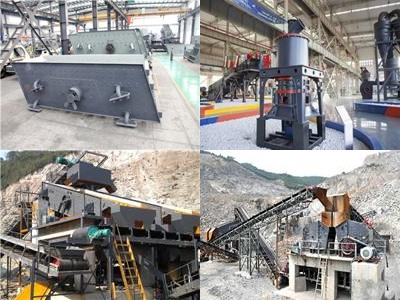Don't miss our holiday offer - 30% OFF!
An In-Depth Exploration Of The Cement Mill Process Flow: The Role Of Vertical Mills In Separate Grinding

Cement production is a meticulously orchestrated process, where each stage plays a pivotal role in delivering the desired product. At the heart of this intricate operation lies the cement mill, where raw materials are finely ground to form the base material for concrete. Understanding the cement mill process flow is fundamental to comprehending the nuances of cement production. Furthermore, the method of separate grinding, particularly through the utilization of vertical mills, has emerged as a critical innovation in enhancing both efficiency and quality within the industry.
Overview of cement mill process flow
In the cement manufacturing process, raw materials such as limestone, clay, and iron ore are crushed and blended to form a homogenous mixture known as raw meal. This raw meal undergoes intense heat treatment in a rotary kiln, transforming it into clinker—a crucial ingredient in cement production. Subsequently, the clinker is finely ground along with gypsum to produce the final product: cement. The cement mill serves as the hub where grinding occurs, converting clinker into the fine powder that is cement.
Importance of separate grinding in cement production
Separate grinding has gained prominence due to its ability to optimize the performance of cement production. By grinding individual raw materials separately before blending them, manufacturers can achieve finer control over the characteristics of the final cement product. This process allows for precise adjustment of particle size distribution and chemical composition, resulting in superior cement quality and enhanced performance in construction applications.
Understanding Vertical Mills
Vertical mills have revolutionized the cement grinding process with their advanced technology and unparalleled efficiency. These mills employ a vertical orientation, allowing for a more controlled and uniform grinding process compared to traditional horizontal mills. The utilization of vertical mills facilitates separate grinding by enabling the simultaneous grinding of multiple raw materials with varying properties. Furthermore, their compact design and low energy consumption make them an environmentally sustainable choice for cement production.
Explanation of vertical mill technology
Vertical mills operate on the principle of compression and shearing forces, where grinding rollers exert pressure on the material bed. This mechanism ensures efficient comminution of the raw materials, resulting in finer particle sizes and improved cement quality. Additionally, vertical mills can be equipped with advanced control systems to optimize grinding parameters, further enhancing their performance and reliability in cement manufacturing.
Advantages in cement grinding operations
Vertical mills offer numerous advantages over conventional grinding methods. Their compact footprint and modular design make them easy to integrate into existing cement plants, minimizing downtime and installation costs. Moreover, vertical mills boast higher grinding efficiency and lower energy consumption per ton of cement produced, leading to significant cost savings and environmental benefits. As pioneers in the field of industrial equipment, Zenith offers a range of cutting-edge vertical mills tailored to the specific requirements of cement manufacturers.
The Role of Vertical Mills
Vertical mills play a pivotal role in optimizing cement grinding operations, offering unparalleled control and efficiency in separate grinding processes.
Detailed breakdown of vertical mill functions
Vertical mills are equipped with precision-engineered components such as grinding rollers and separators, which work in tandem to achieve optimal grinding performance. These components are designed to withstand the rigors of continuous operation, ensuring reliable and consistent production of high-quality cement.
Impact on efficiency and quality in separate grinding
The adoption of vertical mills has revolutionized separate grinding in cement production, enabling manufacturers to achieve finer control over product quality and process efficiency. By leveraging the unique capabilities of vertical mills, manufacturers can meet stringent quality standards while maximizing productivity and minimizing environmental impact.
In conclusion, the advent of vertical mills has transformed the landscape of cement manufacturing, ushering in an era of unprecedented efficiency and quality. As the industry continues to evolve, the role of vertical mills in separate grinding processes will only become more pronounced. At Zenith, we are committed to delivering innovative solutions that empower cement manufacturers to thrive in an increasingly competitive market. Explore our range of cutting-edge vertical mills and discover how Zenith can elevate your cement production capabilities to new heights.